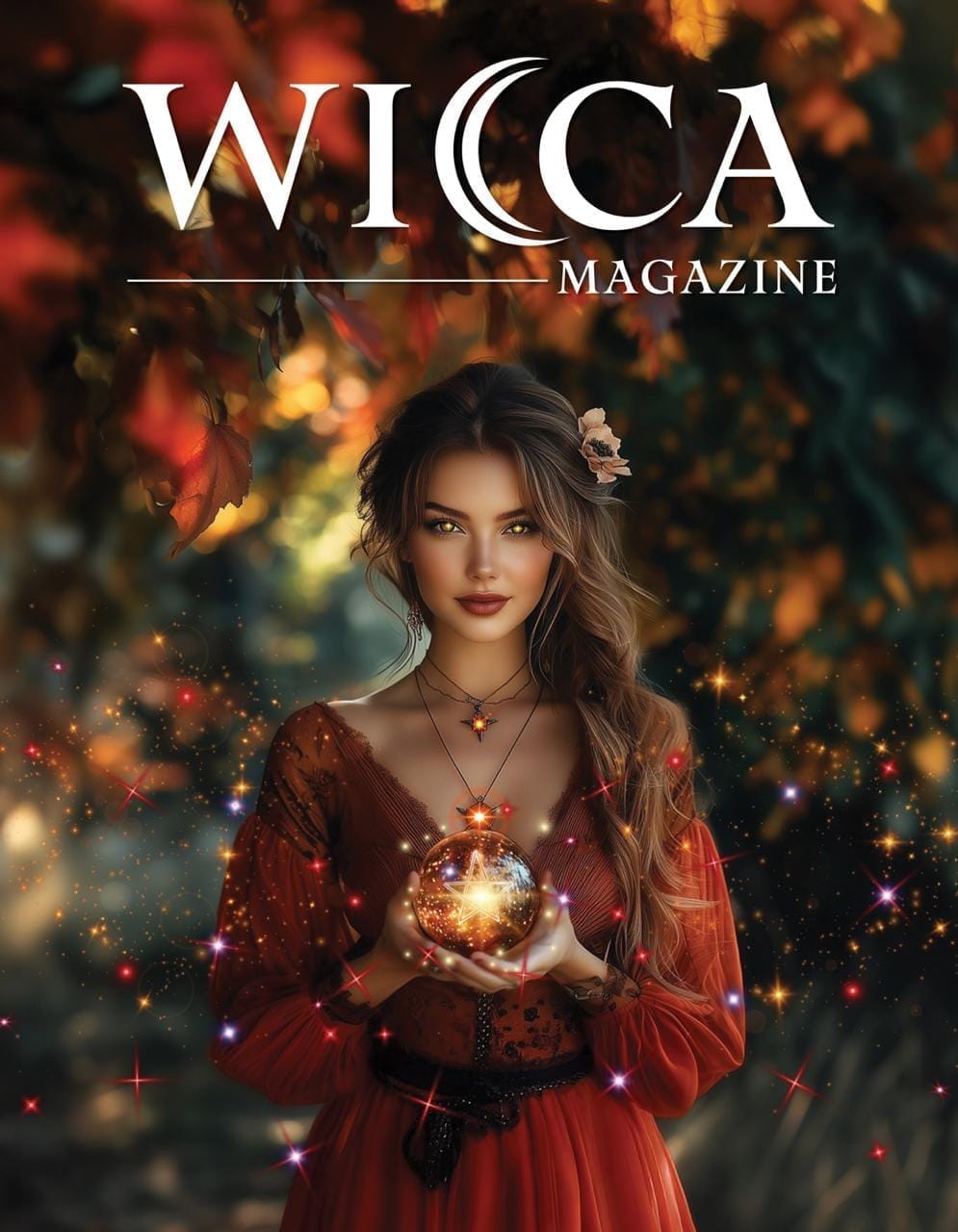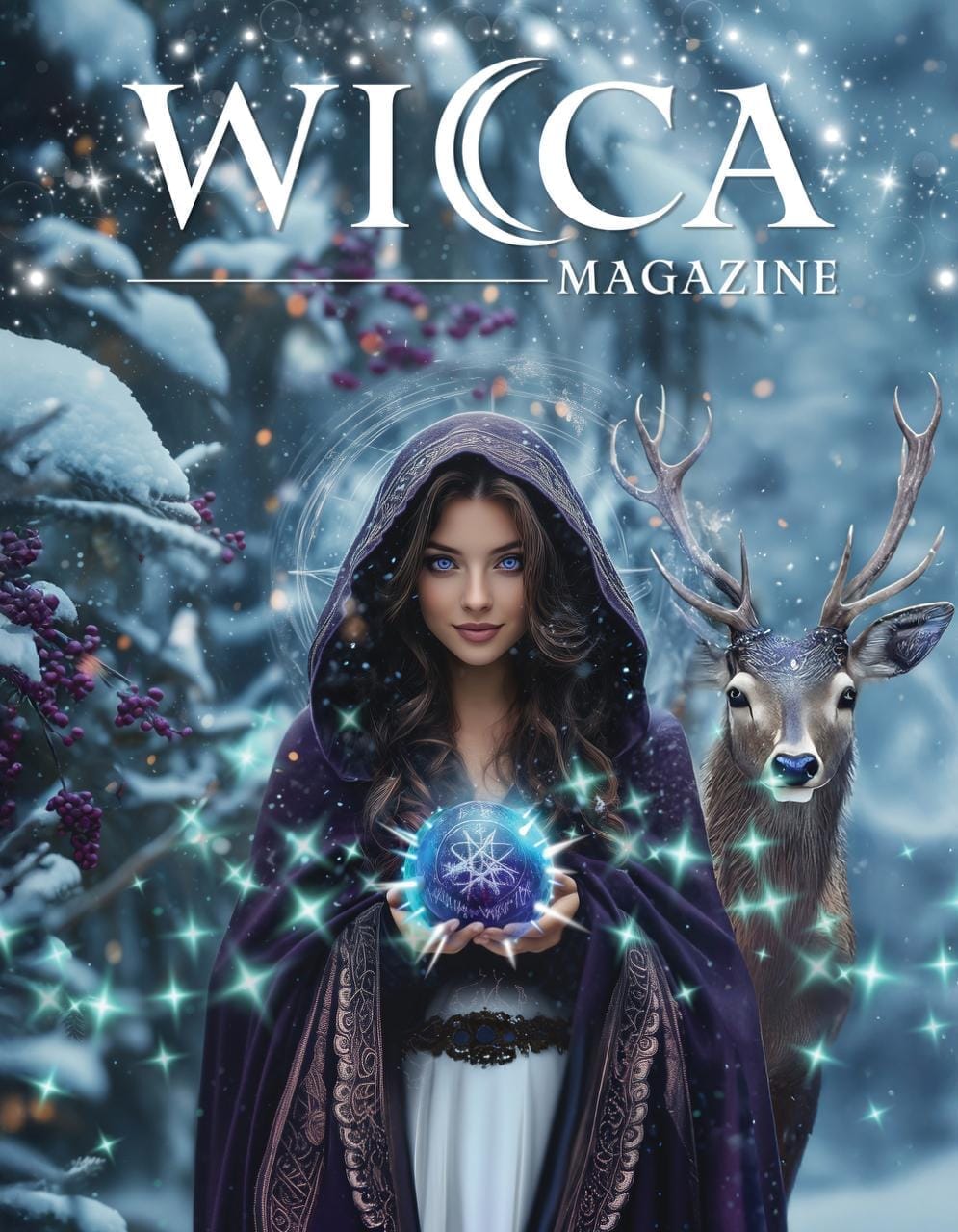


Unlock the Magick of Yule! - Your Wicca Magazine Issue Awaits
Step into the season of light with Wicca Magazine. Each digital issue is a sacred offering of spells, rituals, and Wiccan wisdom — honoring ancient paths and empowering your modern magick. Your craft, your journey, your magickal sanctuary.
Tea is good for you — in more ways than one. Herbal teas are rich in medicinal properties, while at the same time, their many magickal properties can give an edge to your Craft. But can a cup of tea help you predict the future? Can it give you glimpses of what tomorrow will hold?
This is where Tasseomancy (also known as Tasseography or Tassology) comes in. The divination method that reads the patterns made by tea leaves in your cup (or coffee grounds/wine sediments) has been around for a very long time.
This is what you need to know to help you get started.
The origins of Tasseomancy
Our Pagan ancestors have been looking into their cups for answers for millennia. The practice originated in Asia and the Middle East, where tea was used almost as much as coffee for divination purposes. It became exceedingly popular in China, and with the merchants bringing tea and coffee from Asia to Europe in the Middle Ages, Tasseomancy became popular in Europe as well.
Looking at sediments and molten surfaces as a way to divine the future wasn’t entirely a new concept in Europe either. Molten wax and spatters of lead had been used for divinatory purposes until the 15th century or so — but tea leaves soon became much easier to acquire and work with.
After the Middle Ages, Tasseomancy was associated with the Romani gypsies, but from the Victorian times and onwards, the UK developed a vibrant Tasseomancy tradition. Specific cups were created with decorations and symbols to help with fortune-telling. And slowly but surely, from a simple practice one would do for themselves each morning to get a sense of their day, Tasseomancy became an elaborate divination technique one would perform for others in a divinatory salon.
Lately, reading tea leaves has become popular again among solitary Wiccans and witches.
How to get started with your tea leaves reading
Reading tea leaves is not an easy divination process for beginners. There are different methods to use and conflicting advice left and right, making it easy to become confused.
Here are some things to keep in mind when you start practicing Tasseomancy:
The type of tea to use
There has been great debate over which is the most “traditional” tea to read the leaves with. The consensus is that you should brew your tea from loose tea leaves. Don’t attempt a reading with tea that comes from a cut-open tea bag, as this kind of tea has been cut very short, and it will be almost impossible to discern any kind of shapes from its leaves. The looser the tea leaves, the easier it will be to read them.
You can use anything from a monk’s blend black tea to a rooibos tea, a Darjeeling, or an Earl Grey. Trial and error, as well as personal taste preferences, will help you settle on a tea blend.
And it doesn’t have to be “tea” in the strictest sense of the word. When you’re just beginning your Tasseomancy journey, it could be better to make herbal brews with plants that will actually promote intuition and help you reach a divinatory state.
Such plants are jasmine, mugwort, peppermint, dandelion, hibiscus, and pomegranate.
The importance of the cup
Your cup is almost as important as the tea itself. First, it needs to be light-colored (white or cream porcelain) so that the tea leaf patterns are easier to read. But there are also specific Tasseomancy cups that will help ease you into the process with their pre-etched symbols.
Then, the way you’ll do your reading will depend on whether you’re using a cup with a handle or not. A cup with a handle can make reading a bit easier, as it works as a signpost of sorts: you start at the handle and then read clockwise in a spiral until you reach the bottom of your cup. If your cup has no handle, begin reading from the place exactly across from your eyes and then divide the cup roughly into three sections: the rim, the middle, and the bottom. When you start looking for symbols, you should also note in which area of the cup these symbols appear, as this will help you best interpret their immediacy (we’ll get back to this in a while.)
Tradition says that if you’re right-handed, you should pick up the cup with your left hand and vice versa. This is done to help you become more mindful of the ritual and also to denote that it won’t just be a regular drinking cuppa but something different.
The specifics of reading the cup
First off, remember not to use a strainer when you pour your tea. Without the tea leaves floating freely in your cup while you drink, you won’t have anything to read later!
The time your tea takes to brew should be part of your process — light a candle. Meditate. Focus on your main goal and on a question (if you have a specific one). Invoke your deities.
Once you’ve slowly and mindfully drunk your tea, it’s time to flip it over and start your reading. Shake your cup well, and then remove any extra liquid. Some traditions say you need to tap your cup on your saucer three times, but do what feels right. If, for instance, you usually knock on your tarot deck once or twice before a tarot reading, you may want to do the same with your teacup.
Now, when it comes to dividing the cup into different sections: anything closer to the rim is closer to the immediate present, whereas the further down you go towards the bottom of the cup symbolizes the future further ahead. Just keep in mind that Tasseomancy, by default, is a short-term divination technique, not meant to show you the distant future. At most, perhaps you can see a month or a few months ahead. As for the bottom of the cup itself, this symbolizes the core of the issue and the answer to a specific question you may have posed beforehand.
Working with your intuition
If you ask two different witches to read the same cup, they would probably tell you different things! Unlike tarot cards or other divination methods, the patterns you’ll see at the bottom of a cup are open to interpretation. That’s why this process is so delicate, and ultimately it’s best to gain some experience in reading your own cup before you attempt to read the cups of others.
Try to approach your ritual with a clear mind. Don’t expect to see shapes right away — but do take notes of everything you see. If you need extra help deciphering the symbols and you’re familiar with tarot card readings, don’t hesitate to pull out one or two cards as a clarification.
You’re only starting your Tasseomancy journey. It’s exciting, but it takes patience and time.
Tasseography shapes and symbols
There are many ways to interpret the shapes and images you’ll see. The following questions
can act as a guide:
-What’s the first shape that you notice?
It doesn’t matter if it’s not in the “right” part of the cup, aka if it’s something further down in the future. Very often, the first shape or symbol you notice speaks to a bigger influence of an energy or a person in your life.
-Do you see any numbers or letter initials?
It’s easier to start with more concrete shapes. In the case of letters, remember that context matters more than anything. Does the letter R you’re seeing, for instance, feel like it has to do with your boyfriend Rick or with a Raise at your work? Only you know the answer to this, and you need to trust your intuition.
-Do you see any celestial symbols?
A moon, a star, or a comet can all have significance in your reading. For instance, if you see a crescent moon, it could mean that something new is starting — whereas a comet or a star can represent sudden change or an influx of luck in your life. Just think: how would you interpret those symbols if they were printed on a Tarot card?
-What about any animal shapes?
Animals can be perceived as both character traits (for example, a dog symbolizes loyalty and friendship) or as references to particular zodiac signs. A crab, for example, may mean you need to be more careful, but it can also signify a Cancer in your life.
-Finally, pay attention to inanimate objects.
Some things will be easier to interpret than others: for instance, you may see a diamond shape that can mean a gift or a dagger that can mean danger or altercation. But even mundane things like a fence (which could signify limitations) or a vase (keeping secrets) can hold special meanings. There are several books and websites with different interpretations, but in the end, only you can decide which is the right one.